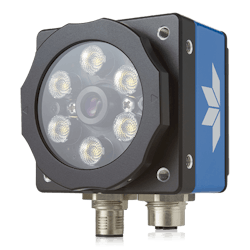2025's Top Trends: Artificial Intelligence and Machine Learning Bring Smarts to RF Systems
Communications and other high-frequency electronic systems are becoming more complex with each channel of voice and data they carry. As the content of communications systems increases, companion technologies such as artificial intelligence (AI) and machine learning (ML) enable machines to help human users more rapidly handle growing amounts of information with minimal delays or loss of data.
As the volume of data continues to escalate, AI and ML will become more integrated into electronic devices to help sort through massive amounts of information in many industries, from automotive and medical through military and telecommunications applications.
For all of the users they help, from consumers through classified surveillance professionals, AI and ML technologies are constantly considered for integration in wireless system and equipment designs. This is because RF/microwave signals continue to crowd available electromagnetic (EM) frequency spectrum.
As cellular communications towers rise through the Fifth Generation (5G) of wireless communications networks, growing numbers of EM signals must be sorted for each application and propagation distance, including Bluetooth, cellular, and Wi-Fi signals. High-frequency filters provide effective sorting of signals at sufficiently high received amplitudes, but with tradeoffs in insertion loss, delay time, and other signal characteristics. Microprocessors and other integrated circuits (ICs) equipped with AI and ML capabilities achieve signal sorting with no loss of signal power and minimal delays.
With AI and ML, a growing number of wireless signals can be detected, classified, identified, and received/transmitted with low latency and high efficiency.
AI/ML's Role in Detecting, Classifying, and Identifying RF Signals
Algorithms developed for AI/ML applications can serve high-frequency signals for beyond line-of-sight (LOS) use. In physically crowded urban environments, for example, AI and ML can sort through multiple received signals to correct multipath effects. If applied to low-probability-of-intercept waveforms, such algorithms must support wide dynamic ranges and low signal-to-noise ratios (SNRs). Any latency in signal processing must be minimized for effective use of AI in high-frequency receivers.
For instance, AI algorithms can assist surveillance receivers by detecting, separating, and identifying radar signals in dense EM environments. As EM energy sources increase for any environment, AI/ML algorithms for detecting and classifying RF/microwave signals must apply to ever-wider frequency bandwidths.
ML methods have been found useful for counter-jamming protection in communications, radar, and electronic-warfare (EW) systems by detecting and analyzing anomalies and unusual EM patterns in an operating environment. Countering a jammer requires detecting its energy and instantly adapting to its presence in the environment. The solution may need changes to transmitted and received waveforms or even a shift to another part of the available frequency spectrum.
Implementing an automatic counter-jamming operating mode within a radar system requires extreme signal-generation agility and flexible reception capabilities, such as from an arbitrary waveform generator (AWG). It also requires a broadband receiver to detect unknown signals within a wide expanse of frequency spectrum—signals that are frequency-hopped across the spectrum.
The receiver may also benefit from the flexibility afforded by a software-defined-radio (SDR) architecture. SDRs capable of detecting unknown signals employ AI-based signal processing to sort through copious amounts of captured signal data, and they provide the performance and agility required by modern signal-intelligence (SIGINT) systems.
Solutions brought on by integrating AI and ML technologies into a communications or radar system require additional supporting RF/microwave technologies if not already contained within the system. But the application of AI and ML equipment with deep-learning (DL) measurement approaches makes it possible to sort through enormous amounts of data from counter-jamming systems to develop solutions within hours and a fraction of the time required by other computer-based search algorithms.
Artificial Intelligence and Machine Learning Improve Antenna Arrays
Integration of AI, ML, and DL technologies into electronic products with RF/microwave capabilities is boosting performance across a wide range of applications and across many market areas. The technologies provide control of array antennas, including those using microelectromechanical-systems (MEMS) techniques to achieve EM antenna patterns from physically small devices.
With increasing demand for antennas for Global Positioning System (GPS), mmWave, unmanned aerial vehicle (UAV), and satellite communications (satcom) applications, AI will accelerate the modeling of essential requirements into antennas with increased coverage and spectrum efficiency.
For EW, Honeywell recently earned a $16 million contract from the U.S. Navy for 25 antenna-array panels for the Surface Electronic Warfare Improvement Program (SEWIP) Block 2. The latest version of the shipboard combat system uses the antenna arrays and EW receivers to detect and analyze potential threats from anti-ship missiles.
AI-Powered Components Feed ADAS Systems Better Data
Demand for AI/ML technologies is fueled by growing mobile electronics applications, such as cellular telephones and military portable radios. Applying AI/ML algorithms and switching capabilities to protective circuitry for batteries in mobile devices promotes efficient use of battery power and increases a portable device’s mobile operating time.
Even suppliers of essential passive components, such as Kyocera AVX with smart capacitors, are exploring the use of AI and ML in power supplies that can greatly extend a mobile radio’s operating time per charge. Kyocera AVX recently introduced power components employing AI/ML techniques at electronica 2024 (see our coverage here), serving applications such as automated driver-assistance systems (ADAS), battery-management systems (BMS), and tire-pressure monitoring systems (TPMS).
Automotive electronic systems like ADAS rely heavily on AI/ML processing and on ultrawideband (UWB) active and passive RF/microwave components to handle 76- to 81-GHz millimeter-wave signals for multiple collision-avoidance radar systems per vehicle. While UWB components from suppliers such as NXP Semiconductors and Texas Instruments help transfer high-frequency signals within ADAS environments, AI/ML technology helps automotive radar systems detect smaller objects and quickly identify them even in cluttered spaces.
AI's Role in Designing and Operating MIMO Antenna Arrays
Using AI, directional beamforming with multiple-input, multiple-output (MIMO) antennas can be performed effectively and efficiently even at small-wavelength, millimeter-wave frequencies. MathWorks provides modeling software for designing MIMO, phased-array, and other complex antennas, while MMWAVE Test Solutions offers three-dimensional (3D) positioners for antenna testing. Also, Keysight Technologies supplies a comprehensive guide on testing phased-array antennas.
Antennas steered by AI are being developed for a host of applications, including for inspection and testing. Olympus Inspection Systems from Evident employ phased-array antennas under AI control to provide material and product inspections with extreme precision even at the high speeds meant to boost manufacturing efficiency.
Optical inspection systems based on cameras are also getting upgrades with the addition of AI/ML technology like Teledyne Vision Solutions’ model BOA3 smart camera. Designed for industrial inspection applications (Fig. 1), the device provides resolution of 1.2 to 12.0 Mpixels in monochrome and color versions. It leverages AI-based computer vision to aid with positioning and part location.
System-level suppliers such as Continental Automotive provide a wide range of ADAS radar solutions to boost vehicular safety (Fig. 2). Use of AI and ML within ADAS vehicles enables analysis of data from multiple sensors, e.g., cameras, radars, and light detection and ranging (LiDAR) systems, and supports special safety features like emergency braking. Moreover, it enables self-driving vehicles to make real-time decisions concerning road situations.
As applications for radar and other high-frequency electronic systems reach beyond traditional military and newer automotive settings, those radar systems will be less conspicuous in use and well accepted for the processing power provided by AI and ML technologies.
A passive Wi-Fi radar constructed with multichannel SDR devices from National Instruments has been used in medical and hospital applications, although the system is undetectable and well-suited for military use. For developers of smart signal-detection systems, the OmniSIG software development kit from DeepSig uses DL techniques to train signal-detection sensors on how to read certain types of signals.






